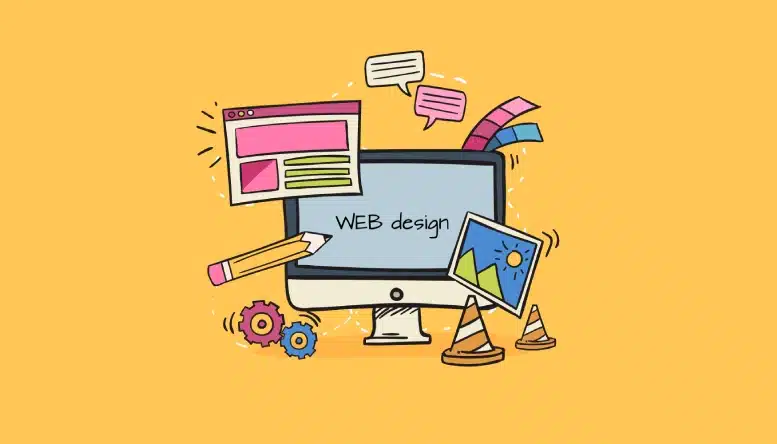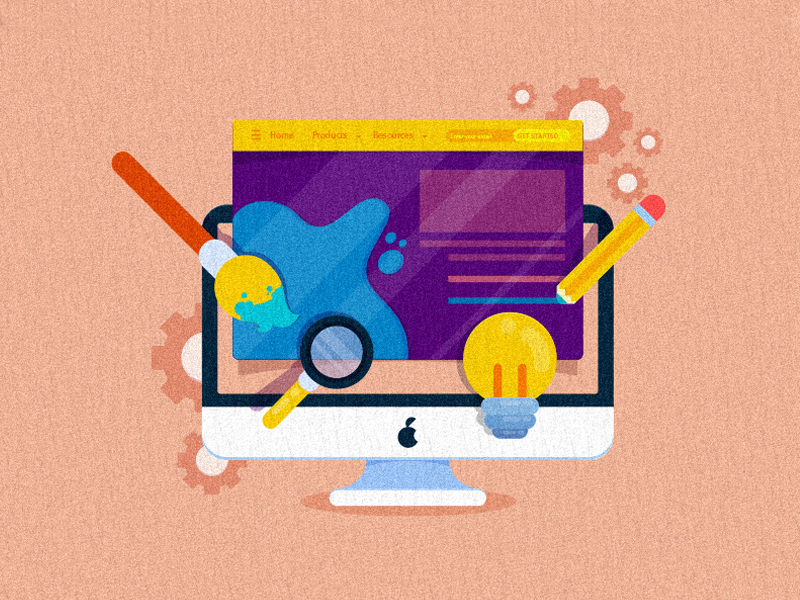Aligned Position Web Design: Crafting Visually Appealing Websites for Modern Businesses
Aligned Position Web Design: Crafting Visually Appealing Websites for Modern Businesses
Blog Article
The Best Types of Website Design to Improve Individual Experience and Engagement
In the ever-evolving landscape of electronic communication, the efficiency of Web style substantially influences customer experience and involvement. Various design methods, such as minimal, responsive, and interactive designs, each deal special advantages that can provide to diverse user demands.
Minimal Web Layout
As digital landscapes come to be increasingly chaotic, minimal website design has actually arised as an effective method to improving user experience. This design viewpoint focuses on simpleness, focusing on crucial elements while getting rid of unnecessary interruptions. By making use of adequate white space, straightforward navigating, and a restricted shade scheme, minimal design promotes clearness and guides individual focus to key content.
The core principle of minimalist website design is to create a seamless interaction for users. By reducing cognitive load, customers can promptly understand information without really feeling overwhelmed. This direct strategy not only improves functionality yet also urges involvement, as visitors are most likely to discover a site that is aesthetically enticing and easy to navigate.
In addition, minimal style frequently highlights typography and imagery, making use of these aspects purposefully to share messages efficiently. In significance, minimal Web design is not just a trend; it is a thoughtful methodology that recognizes the significance of user-centered design.
Receptive Website Design
In today's diverse digital setting, responsive Web style has actually come to be essential for developing a seamless customer experience across a plethora of gadgets. As customers access web sites on mobile phones, desktop computers, tablets, and laptop computers, the capacity of a site to adapt its design and content to various display dimensions and resolutions is critical.
Receptive Web layout employs versatile grids, photos, and CSS media queries to ensure that Web content exists optimally, regardless of the tool made use of. This method not just boosts the visual appeal of a site yet likewise significantly improves functionality. Customers are most likely to involve with a site that supplies a consistent experience, as it gets rid of the stress of needing to zoom in or scroll exceedingly.
Moreover, online search engine, consisting of Google, prioritize mobile-friendly internet sites in search positions. By adopting responsive layout, businesses can enhance their visibility and reach a wider target market. This method also streamlines internet site upkeep, as a single version of the site can deal with all gadgets, decreasing the demand for numerous variations. In summary, responsive website design is an essential technique that boosts customer experience, interaction, and general contentment.
Interactive Web Design
Receptive website design prepares for improving user experience, but interactive Web layout takes this an action even more by involving customers in a more vibrant means - Aligned Position Web Design. By incorporating aspects such as animations, clickable prototypes, and real-time feedback, interactive Web design captivates users, attracting them into a richer surfing experience
This technique not only promotes interaction but also encourages customers to check out material actively as opposed to passively eating it. Strategies such as gamification, where customers earn benefits for finishing jobs, can significantly improve the time spent on a website and boost overall satisfaction. Additionally, interactive features can simplify complex information, making it much more pleasurable and absorbable.

Integrating interactive style elements can likewise bring about greater conversion rates, as customers are most likely to engage with a website that proactively includes them. Aligned Position Web Design. Inevitably, interactive website design changes user experiences right into unforgettable journeys, making sure that visitors return time after time
Apartment Design
Identified by its minimalistic strategy, level style emphasizes simpleness and capability, removing unneeded aspects and concentrating on important features. This design philosophy focuses on functionality, guaranteeing that customers can navigate user interfaces with simplicity and effectiveness. By utilizing a clean visual, flat design removes the clutter commonly discovered in a lot more elaborate designs, therefore boosting user emphasis on content and capability.
The characteristic of flat style depends on its usage of vibrant colors, simple typography, and geometric shapes. These components add to a visually attractive interface that is both approachable and modern-day. In addition, level layout cultivates a sense of clearness, permitting users to recognize essential activities and information without interruption.
Moreover, flat layout is particularly reliable in responsive Web design, as its simplicity converts well throughout various gadgets and display sizes. By concentrating on vital attributes, flat design not just fulfills user requirements but likewise urges seamless interaction, making it browse this site an essential component of efficient Web style approaches.
Adaptive Web Style
Flexible Web layout personalizes the individual experience by developing numerous fixed layouts tailored to different display sizes and gadgets. Unlike receptive style, which fluidly readjusts a solitary format, flexible style uses distinctive formats for specific breakpoints, making sure ideal discussion on numerous systems. This strategy permits developers to concentrate on the unique characteristics of each device, boosting usability by delivering precisely what users need based on their context.
One of the main benefits of flexible Web style is its capability to enhance tons times and efficiency. By offering tailored web content and photos that fit the customer's gadget, web sites can decrease information use and enhance loading speeds. This is particularly helpful for individuals with slower connections or minimal information plans.

Furthermore, adaptive layout helps with an extra controlled and regular branding experience. Since developers produce multiple formats, they can make sure that the aesthetic elements line up with the brand name's identity throughout various platforms - Aligned Position Web Design. This leads to a natural customer experience, enhancing interaction and promoting individual retention
Verdict
In conclusion, the combination of minimal, receptive, and interactive website design concepts considerably boosts customer experience and engagement. Minimalist style cultivates clarity and focus, while receptive layout ensures adaptability across different gadgets, advertising ease of access. Interactive style astounds customers via vibrant components, encouraging exploration and personalization. Collectively, these style approaches add to the development of straightforward settings that not just boost fulfillment yet additionally drive greater conversion prices, highlighting their essential importance in contemporary look what i found Web design strategies.

Minimalist style cultivates quality and focus, while responsive design guarantees versatility throughout various gadgets, advertising accessibility. Collectively, these design approaches contribute to the creation of user-friendly atmospheres that not only improve contentment yet also drive higher conversion rates, underscoring their crucial significance in contemporary Web design techniques.
Report this page